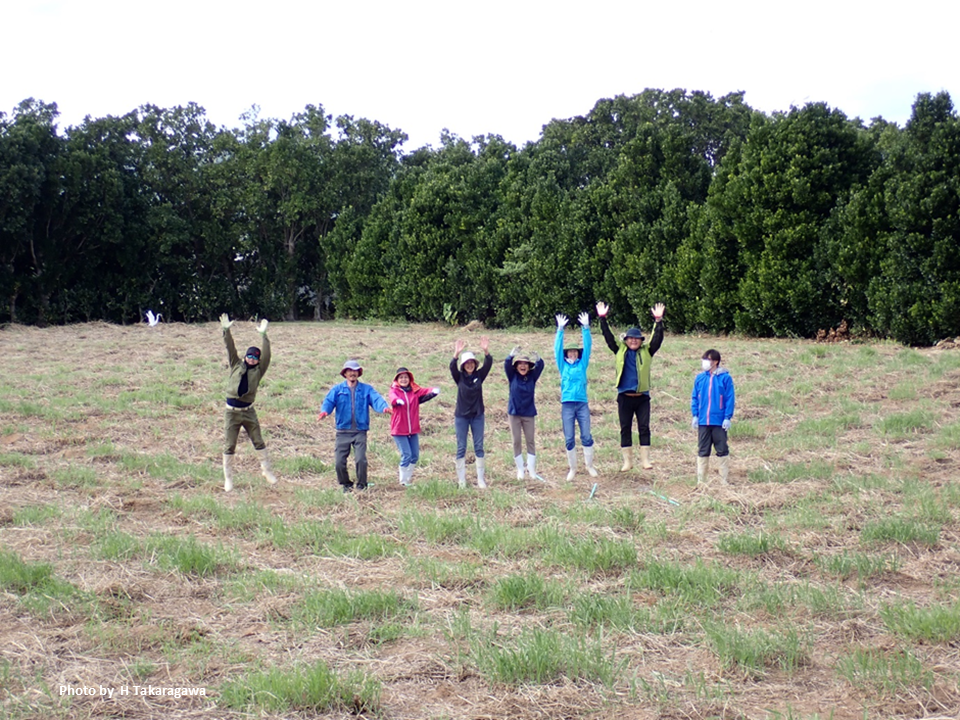Pick Up
1199. Multiple Ratoon Survey of Wild Sugarcane Species Completed! (Takaragawa’s Newsletter vol. 3)

1199. Multiple Ratoon Survey of Wild Sugarcane Species Completed! (Takaragawa’s Newsletter vol. 3)
In the Nansei Islands, including Ishigaki Island where the Tropical Agriculture Research Front (TARF) is located, ratoon cropping has become mainstream as a labor-saving method, partly due to the ageing of growers. This method involves the cultivation of 'sprouts' or suckers by leaving underground plant stubbles after harvest and cultivating them again until the next harvest. It is also attracting attention as a sustainable cultivation method that achieves low carbon emissions in addition to labor savings, as it reduces the number of ploughings and has good fertilizer use efficiency. In addition, although it is tempting to increase the number of ratooning times, repeated ratoonings two or three times often result in a gradual decline in yield. Therefore, there is a strong need to develop novel cultivation methods and improve varieties that do not reduce productivity even under multiple ratooning. In the C4 ‘Tropical Crop Resources’ project, growing trials are being conducted to evaluate the multiple ratooning ability of wild sugarcane (Saccharum spontaneum), mainly collected from domestically collected lines, with the aim of improving multiple shoot potential by utilizing the advantages of tropical and island research centers, such as subtropical climate and rich genetic resources.
Despite the social demand for improved multiple ratoon productivity, there has been little research on this topic worldwide because cultivation trials for improving multiple ratoon ability take a long time and are complicated and prolonged, especially when dealing with multiple genotypes such as genetic resource populations. The evaluation of multiple ratooning ability of the genetic resources of Erianthus in Thailand, which has been conducted mainly by JIRCAS, is an unprecedented example of such research worldwide (Terajima et al. 2022), and the database (https://www.jircas.go.jp/ja/database/erianthus) released in the current medium to long term is expected to further develop the related research. Similarly, we plan to compile and actively disseminate the results of the above-mentioned multiple ratooning evaluation of wild species collected in Japan and have started crossbreeding with promising genotypes.
In our experiment, the evaluation of the multiple ratooning ability of wild species was performed for a total of four cropping seasons (four years), including the new plantings in 2021/2022 and three subsequent rounds of ratooning. The harvesting survey has been an annual event since 2022, with approximately 1600 plants surveyed for a period of approximately one month. The daily routine is as follows: in the morning, the plants are harvested and the plant weight and stem count are measured in the field; in the afternoon, a detailed survey such as stem length and stem diameter measurement is carried out at the survey site outside the field using representative stems; and in the evening, the plants are chopped for dry matter measurement. Although there is no summer heat, many days in winter, even on Ishigaki Island, feel cold, and the survey is carried out rain or shine, so patience is required for continuous surveys. The understanding and cooperation of the Technical Support Office staff and contract workers are essential for such long-term sugarcane research. The photo above shows the harvesting survey completed and the residues cleaned. The sugarcane harvesting survey lasts from December until the following March. We would like to take this opportunity to express our gratitude for the ongoing support.
Terajima et al. (2022). Genetic variation in agronomic traits of Erianthus germplasm under multiple‐ratoon crops in Thailand. Crop Science, 62(4), 1531-1549.
Contributor: TAKARAGAWA Hiroo, Tropical Agriculture Research Front, JIRCAS
